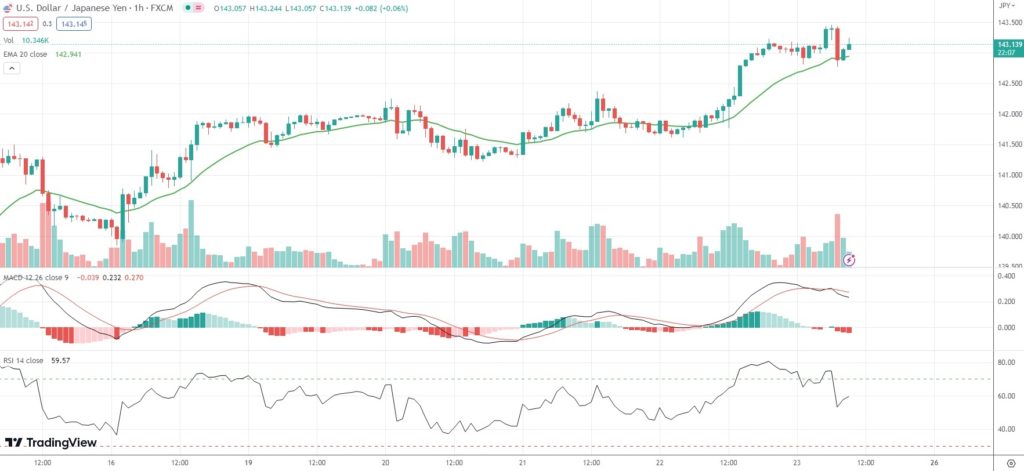Key points
- USD/JPY trades near fresh 32-week peak of 143.450
- Flight to safety after hawkish central bank moves boosts US Dollar
- Japan’s core inflation slows at a lesser pace than anticipated in May
- Japan’s inflation still above BoJ target, challenging the central bank’s ultra-easy stance
USD/JPY held close to a fresh 7 1/2-month high on Friday, after data showed Japanese core consumer price inflation eased at a slower rate than expected in May.
Additionally, a so-called “core-core” index, which excludes both fresh food and fuel, surged at the sharpest annual rate since June 1981, while challenging Bank of Japan’s commitment to ultra-accommodative policy.
The BoJ left its benchmark short-term interest rate without change at -0.10% at its June policy meeting and also kept a 0% cap on 10-year bond yields. This has renewed pressure on the Yen due to deepening monetary policy divergence between Japan and other developed nations.
Annual core consumer price inflation in Japan decelerated to 3.2% in May from 3.4% in April. Market consensus, however, had pointed to a bigger drop to 3.1%.
Still, the nation’s core inflation remained above the BoJ’s 2% target for the 14th straight month.
Japan’s “core-core” index, a closely watched barometer of domestic demand-driven price trends, surged 4.3% YoY in May after a 4.1% YoY increase in April.
Meanwhile, the US Dollar was underpinned by investors’ rush to safe haven assets, since a series of hawkish moves by global central banks fueled concerns over economic growth outlook.
The US Dollar Index was last up 0.68% on the day to 103.092.
Federal Reserve Chair Jerome Powell said on Thursday that interest rates would be moved at a “careful pace” from here.
According to Powell, the point of keeping rates on hold at the Fed’s policy meeting last week was precisely to slow the pace at which the central bank was raising borrowing costs.
As of 9:37 GMT on Friday USD/JPY was inching up 0.02% to trade at 143.140. During the late phase of the Asian session the major Forex pair went up as high as 143.450. The latter has been the pair’s strongest level since November 10th 2022 (146.590).






